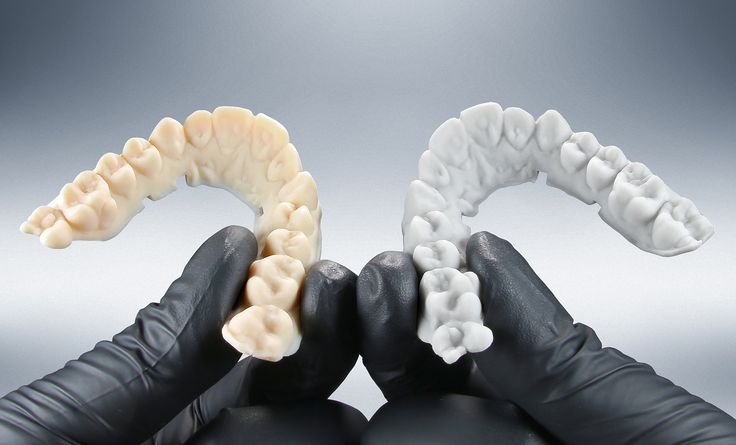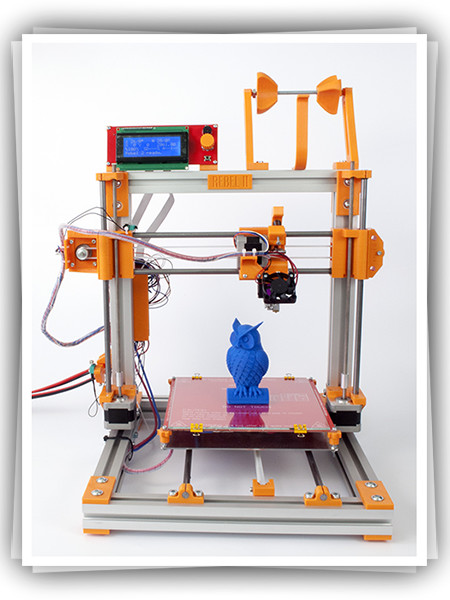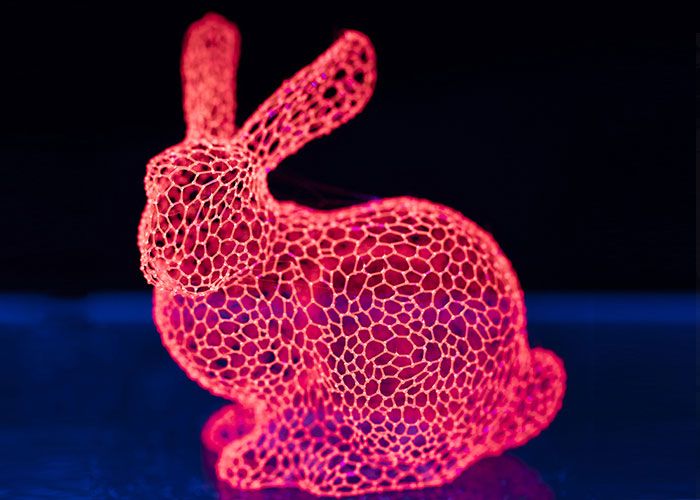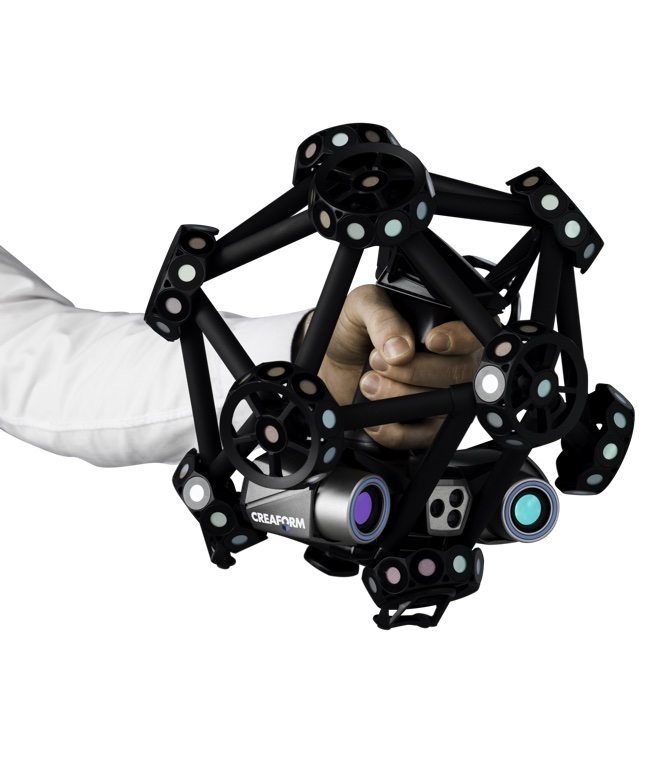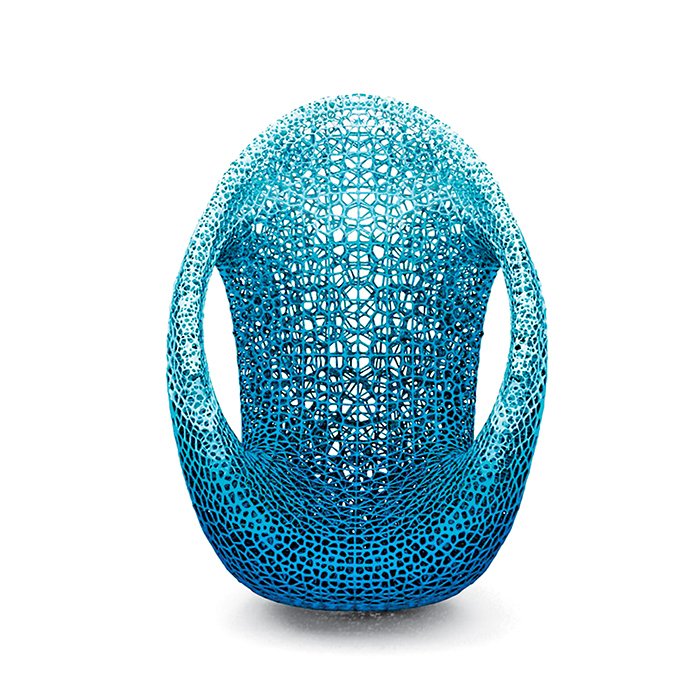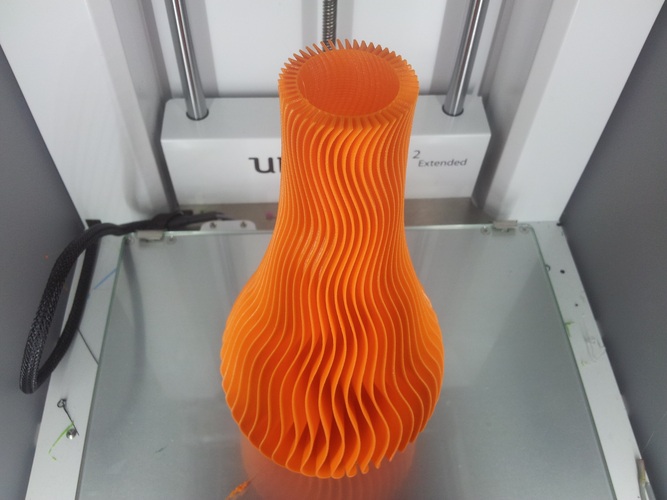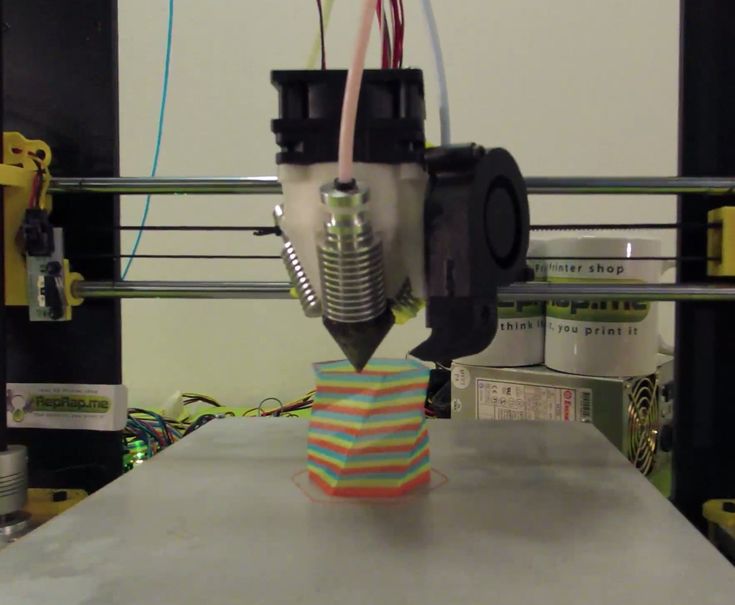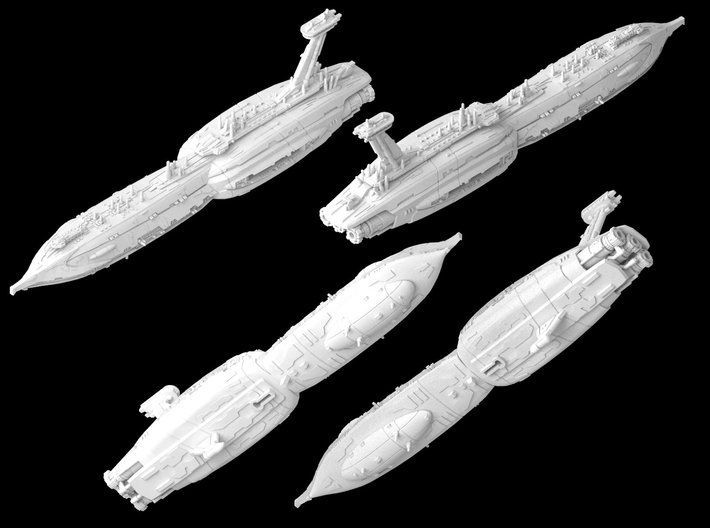3D printers for dental industry
Lifelike Digital Dentures at the Click of a Button
Skip to Main Content
Precision and Performance
A directly 3D printed prosthetic means fewer steps and less variability and a quality end product every time
Quick, Repeatable Workflows
Digital denture designs are reusable, shareable, modifiable and easy to reproduce with 3D printing
Improved Efficiency
Economical hardware and materials, providing better profitability than traditional workflows—increase production and profitability at the same time
Once you’ve brought digital technology in-house, you know the transformative potential it has for each part of your business. Your removables department could be next.
3D printed denture workflows are:
- Fast and repeatable, offering optimized profitability and easy replication of dentures.
- Fully customizable to each patient.
- Able to facilitate instant communication between lab and practice.
Learn the workflow from 3D printed denture experts in our Digital Denture Master Class.
Watch the Webinar
With Formlabs, dentures are affordable for the patient and profitable for you. Provide high quality 3D printed dentures at a fraction of the cost.
| Traditional poured | Milled | 3D printed base, stock teeth | Fully 3D printed | |
|---|---|---|---|---|
| Denture base material cost | $2 | $35 | $5 | $5 |
| Denture teeth material cost | $30 | $25 | $30 | $5 |
| Hours of technician labor | 2.5 | 1.5 | 1 | 1 |
| Hourly cost of technician labor ¹ | $25 | $25 | $25 | $25 |
| Material and labor cost | $95 | $98 | $60 | $35 |
¹ NADL 2019 Business Survey
Try our interactive ROI tool to see how much time and cost you can save when 3D printing on Formlabs dental 3D printers.
Calculate Your Savings
Digital denture fabrication removes guesswork and potential for error while retaining room for artistry. Remakes and rush cases are easy for even a junior technician.
Design
Post-Process
Finish
Read Our Step by Step Guide
Virtual seminars, lectures from leading practitioners, and short, helpful videos help you start faster and get the most out of your 3D printer.
Explore More Educational Resources
Formlabs 3D printers enable cost-effective, mass-customized digital production of a wide range of dental products.
Explore Indications
The Form 3B+ and Form 3BL are both available for purchase in packages that include all of the tools required to bring high-precision 3D printing into your lab. Contact Formlabs or an Authorized Reseller today.
Configure Your Printer Package
5 Ways 3D Printing has Redefined the Dental Industry
Additive manufacturing has affected many industries, but few stand to benefit as much as the medical fields, including dentistry.
3D printing technologies thrive in an environment where our unique bodies require custom solutions. As a result, the dental industry is going through a rapid digital transformation with digital workflows bringing increased efficiency, consistently high quality, and lower costs to dental labs and practices.
Read on to discover five ways in which the digital workflows are revolutionizing the dental industry.
While dentistry has always required high levels of customization, the industry has traditionally relied mostly on manual methods to create custom appliances. Today, digital workflows enable mass customization in a consistent, automated way, requiring less labor and incurring lower costs.
Everyone has a dentition—the pattern of development and arrangement of teeth—unique to them. Dental indications must, therefore, be made to match each individual patient’s anatomy. With traditional manual workflows, the quality of the finished products is highly dependent on the skills of a given technician.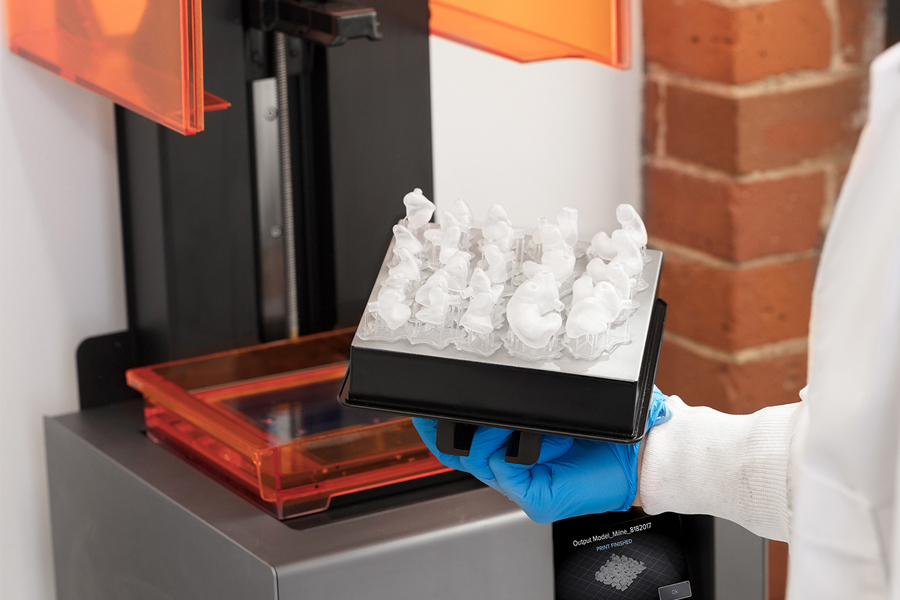 Achieving consistent and high-quality dental products with so many potential sources of error is incredibly difficult and expensive.
Achieving consistent and high-quality dental products with so many potential sources of error is incredibly difficult and expensive.
Intraoral scanners can capture scans directly from the patient, replacing manual impressions with fast and accurate digital impressions. Alternatively, desktop scanners in dental labs can be used to scan traditional alginate and PVS impressions.
With digital workflows, each dental product is precisely detailed to the specifications dictated by the patient's anatomy. 3D printers are like Swiss-army knives—no other tool can produce such a wide variety of dental products with consistently high quality. Using dedicated materials, labs and practices can use 3D printers to produce orthodontic models, highly accurate crown and bridge models, surgical guides, castable or pressable restorations, aligners, retainers, long-term biocompatible dental products like splints or dentures and more.
Digital technologies simplify workflows, reduce the room for error and the amount of labor required, resulting in time and cost savings on both the lab's and practice's side.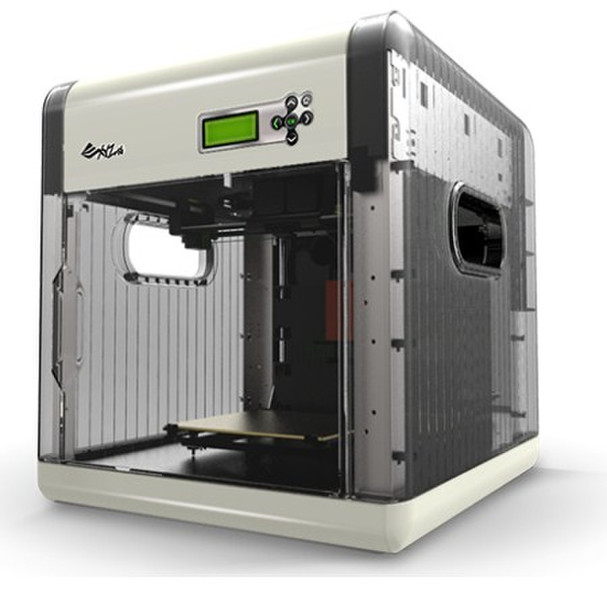
Orthodontics as a dental specialty has come a long way since traditional metal wired braces. While still necessary in some complex cases, removable clear aligners provide an appealing alternative today and have been used to treat millions of patients.
Clear aligners, one of the most popular orthodontic treatments today, couldn't exist without digital technologies such as 3D printing.
Clear aligners couldn't exist without digital technologies; their manufacturing process is a brilliant combination of multiple digital workflows. An orthodontist or dentist first captures an impression of a patient's dentition with a 3D intraoral scanner or takes a traditional impression for the lab to scan. The digital model provides a basis to plan the progressive stages between the current and desired teeth positions. Each stage is then 3D printed and the aligners are thermoformed over these 3D printed molds.
Traditionally, the 3D printers used in this process were large and complex to use and prohibitively expensive. Now, smaller format desktop 3D printers can create molds for thermoformed appliances, opening up the possibility for any lab or practice to produce aligners and retainers in-house and expand production without adding substantial overhead.
Now, smaller format desktop 3D printers can create molds for thermoformed appliances, opening up the possibility for any lab or practice to produce aligners and retainers in-house and expand production without adding substantial overhead.
Ashford Orthodontics, the largest orthodontics laboratory in the UK produces thousands of clear retainers using 3D printed models.
Digital technologies can augment complex surgical procedures. CBCT, virtual placement planning, and surgical guides are becoming the new standards of care in implantology. With them, the accuracy of implant placement during surgery is all but guaranteed, the risk of surgical complications fall, and clinical results are improved overall. Let's look at the workflow-enhanced production of a surgical guide as an example.
To create a guide, implantologists combine intraoral scan data of a patient's dentition and anatomy of the patient osteotomy from a CBCT or cone beam scanner. Based on the anatomical data, practitioners use CAD software to plan treatment with high accuracy and then use a 3D printer to produce a guide that is ready to be used in surgery.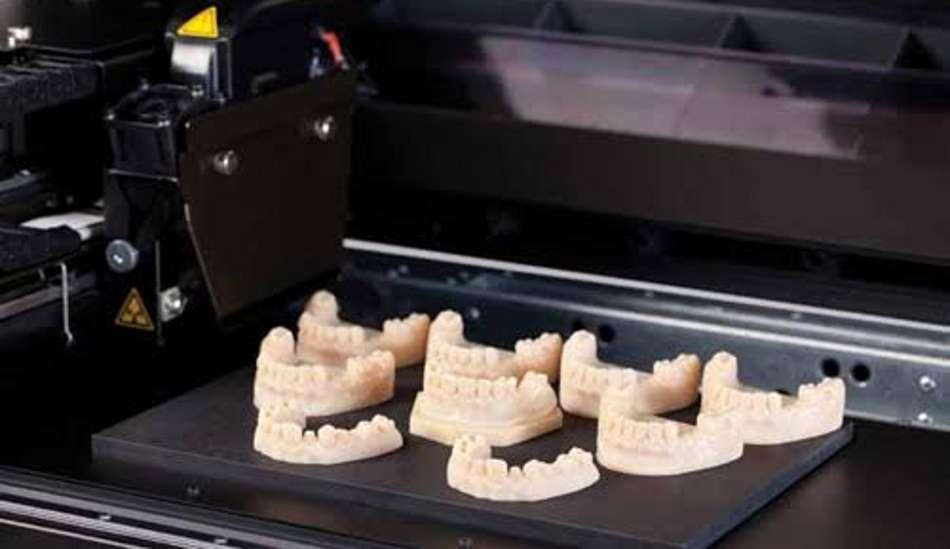
A 3D printed surgical guide used in surgery.
Formerly, the only ways of producing surgical guides was through milling or 3D printing on industrial 3D printers. But due to the complex and expensive machinery involved, these guides could easily cost hundreds of dollars, which made them cost-prohibitive in most cases. Now with desktop 3D printing, the costs are down by a factor of 10-100X, paving the way for guided surgeries to become the standard.
Traditional denture manufacturing is a time-consuming and labor-intensive analog workflow that involves multiple patient visits and production steps. It is a complex craft with a steep learning curve and dental labs increasingly struggle to find technicians with the advanced skills and expertise required to produce them.
Dentures are one of the latest innovations in digital dentistry. They offer an efficient and cost-effective manufacturing solution and a major step toward the overall simplification of the dental laboratory manufacturing process.
Digital dentures are cost-effective and offer a consistent workflow for a high-quality end product.
Denture production with the digital workflow includes fewer steps and less variability, resulting in a more consistent workflow for a high-quality end product every time. Digital denture designs are also reusable, shareable, modifiable, and easy to reproduce with 3D printing. The affordable hardware, lower material costs, and time savings (less labor) all contribute to a substantial cost advantage over their handcrafted counterparts.
Scanning solutions, software tools, and materials are developing rapidly to take digital dentures to their full potential. As they do, digital dentures are bound to replace or supplement the traditional workflow for an increasing share of the 50 million dentures produced a year globally and pave the way for more inclusive denture solutions for everyone who needs treatment.
At the end of the day, it's the patients who stand to gain the most from the advances in digital dentistry.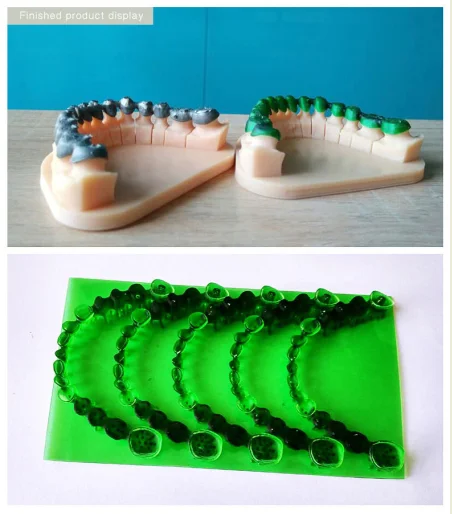
Starting with the visit to the dentist or orthodontist, being able to visualize a dental procedure can be as reassuring for the patient as it is helpful for the practitioner. Virtual treatment planning, diagnostic wax-ups, and highly detailed replicas can help patients envision and understand the treatment they will be receiving in great detail, reducing anxiety and increasing patient acceptance.
Highly detailed replicas can help patients envision and understand their treatment.
Considering workflow and treatment improvements, taking an impression of a patient's dentition with intraoral scanning is quicker and more comfortable than traditional alginate and PVS impressions. The products themselves can be more aesthetically pleasing (clear aligners) and treatments more accurate and less invasive (digital implantology and surgical guides). Processes are generally faster as digital elements remove superfluous steps, making the patient's visit quicker and easier.
Precise and consistent treatments mean that patients are vastly less likely to need to return for repeat work on the same problem, saving their time and money. But a satisfied patient is more likely to become a return customer and refer others, contributing to the long-term success of all dental businesses.
But a satisfied patient is more likely to become a return customer and refer others, contributing to the long-term success of all dental businesses.
These are just some examples of the wider scope of changes that digital dentistry and 3D printing processes are bringing to the dental industry.
Despite the narrative of “traditional vs. digital workflows” used frequently to promote the latter, contemporary dental workflows can combine the best of both. The support of digital workflows translates to a plethora of new possibilities for the industry and a raft of improvements for the customer.
Find out more about how Formlabs is driving this change, learn about the range of dental indications, and request a free sample part for yourself to see the quality firsthand.
Request a Sample 3D Printed Part
How to choose a 3D printer for your dental office or lab
Additive manufacturing is the final piece of the digital dentistry manufacturing process and has become a logical business choice for dental offices and laboratories due to its combination of high quality, low cost and streamlined workflows.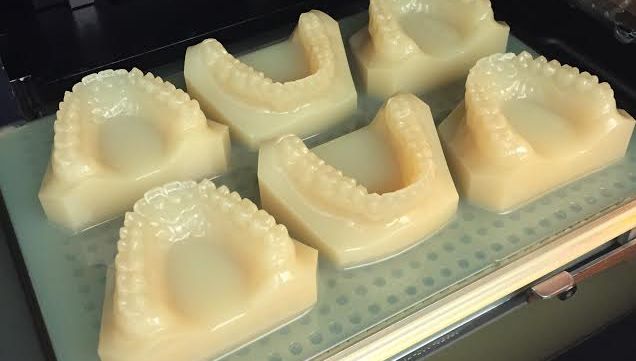 The market is rapidly evolving, making this technology available to most businesses.
The market is rapidly evolving, making this technology available to most businesses.
In this guide, we'll look at the various 3D printing technologies used in dentistry, as well as all the data you need to evaluate before investing in a dental 3D printer.
New to digital dentistry? Check out our guide to learn more about the difference between analog and digital processes and what goes into integrating 3D printing into your work.
sample
Would you like to see the resulting quality with your own eyes? Choose your material and we'll send you a free sample of the Form 3B 3D printed model for you to evaluate.
Request a free sample
Two 3D printing technologies are currently used in dental practices and laboratories: stereolithography (SLA) and digital light processing (DLP).
In stereolithography, the printed area on a container of liquid polymer is selectively exposed to a laser beam, whereby the polymer solidifies in specific locations.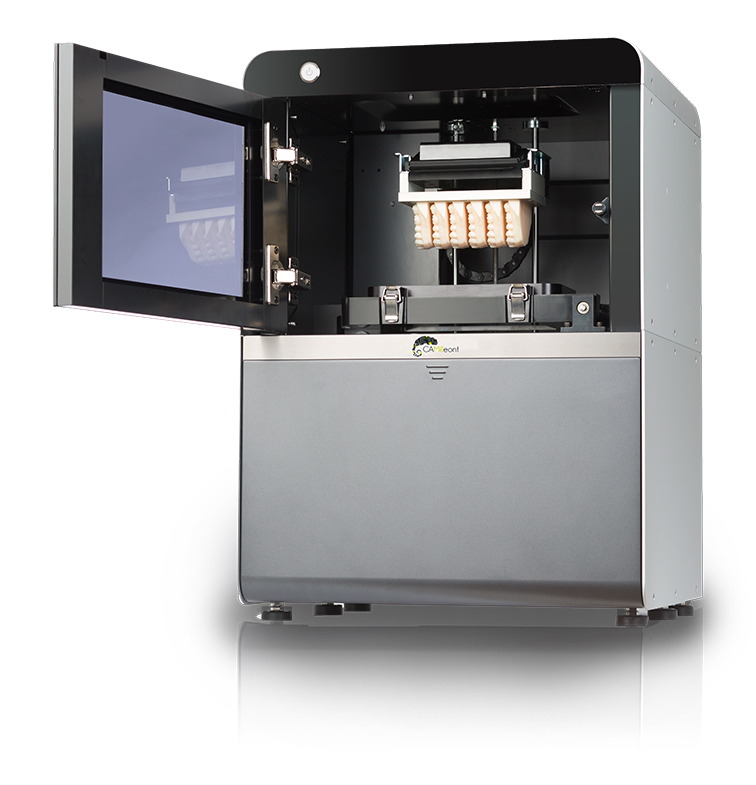 The Low Force Stereolithography (LFS) technology used in the Formlabs Form 3B Dental 3D Printer is the next evolution in SLA 3D printing, which reduces interlayer deformation on a part as it peels off the resin container, producing parts with incomparable smooth, clean and precise surface.
The Low Force Stereolithography (LFS) technology used in the Formlabs Form 3B Dental 3D Printer is the next evolution in SLA 3D printing, which reduces interlayer deformation on a part as it peels off the resin container, producing parts with incomparable smooth, clean and precise surface.
Digital Light Processing uses the same chemical process as SLA and LFS, but uses a digital projector rather than a laser as the light source to cure the resin.
The most common dental 3D printers selectively hit liquid polymer with a light source: SLA and LFS with a laser, DLP with a projector, forming very thin solid layers of plastic that fold into a solid object.
SLA, LFS, and DLP 3D printers work in the same way, and the differences in print quality, workflow, materials used, cost, and other characteristics are device-specific rather than technology-specific.
Clear aligner, thermoformed from a 3D printed model on a Formlabs Form 3B dental 3D printer.
Webinar
Watch a Formlabs product demo and take a closer look at our new LFS dental 3D printer.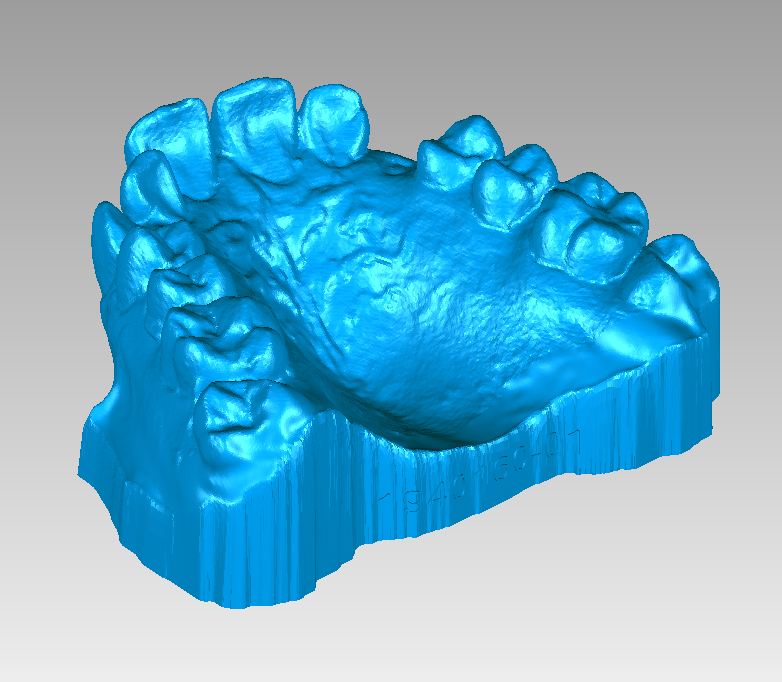
Watch the webinar now
Ensuring the high quality and accuracy of final models is the most important task for any dental practice and laboratory. Unfortunately, not all 3D printers on the dental market are capable of delivering the quality, precision, and accuracy required for dental products. In addition, comparing different dental 3D printers goes beyond comparing specifications.
Some manufacturers may try to confuse their potential customers with misleading claims and specifications. Most often, they pass off as "accuracy" the height of the layer, the size of the laser spot or pixel, although these characteristics do not directly affect the accuracy of the finished models. While most companies list accuracy as just one number (50 or 75 microns, for example), this is usually a marketing gimmick and most often indicates the ultimate resolution of a printer.
The basic units of the SLA and DLP processes are different shapes, making it difficult to compare different printers by numbers alone.
In essence, many different factors affect accuracy and accuracy: the quality of the 3D printer itself, the 3D printing technology, materials, software settings, post-processing, and how well all these systems are calibrated, so about 3D printing printer can only be judged by the final dental models.
Accuracy should always be judged from actual scan data of printed models. Better yet, order a free sample or a sample of your own design to check for fit or measure and compare with the original design.
Examining the accuracy of a complete arched model with stamps printed on a Form 3B LFS 3D printer. Dental 3D printers can produce a range of high quality custom products at low cost, providing exceptional fit and reproducible results.
The ease of use of a 3D printer is another important point. Eventually, you will have to learn how to operate the equipment and maintain it on a daily basis. Try to understand what the learning curve for a new 3D printer will look like by watching online videos, visiting an exhibition, contacting the sales team, or asking your colleagues to share their experience.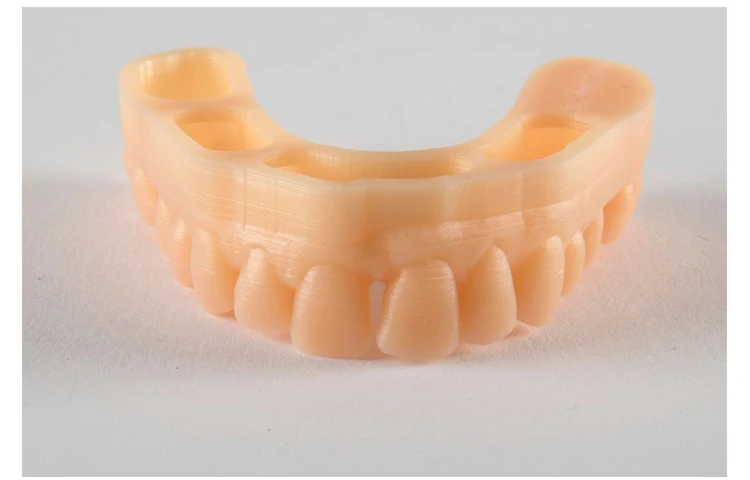
Fortunately, most of today's SLA and DLP desktop 3D printers are designed to be intuitive, so that offices and labs that will use this equipment as an outsourcer can easily become familiar with the process.
Review all types of day-to-day operations and maintenance that the printer will need after it has been started up and during operation. For example, automatic resin dispensing on the Formlabs SLA and LFS 3D printers means you never have to worry about running out of material.
Some printers come with their own 3D printing software, such as PreForm for Formlabs 3D printers, while others offer pre-built solutions. Different software tools have different features, for example, PreForm offers one-click print process customization, powerful tools for optimizing substrate density and size, adjustable layer thickness, and features that save materials and time.
Want to see how it works? Download PreFrom for free to test its features.
Models printed with SLA, LFS, and DLP require post-processing after printing.
First, the models must be washed in solvent to remove excess resin. In addition, biocompatible dental models require post curing. For SLA and LFS 3D printers, Formlabs offers solutions to automate these steps, saving time and labor, greatly improving the maintenance of a clean, low-maintenance production environment.
Finally, depending on the design, some models need to be separated from the supporting structures. To make this easier, the Formlabs Form 3B printer features easy-to-remove support structures that greatly reduce the need for finishing and costly manual labor.
The first 3D printers had a bad reputation because half the time was spent on their maintenance, and a large number of printed products went to waste, even if the printers worked fine. Fortunately, the latest generation of printers has much higher reliability. For example, users of the Formlabs 3D printer report success rates over 9 million attempts on tens of thousands of printers.5 %. Examine published reliability information in detail and make sure the manufacturer has the appropriate warranties and service offerings to make sure you get the proper attention if service is needed.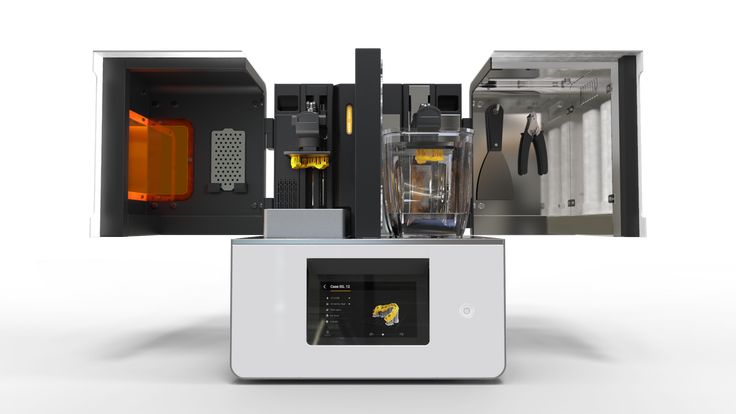
If you are making a decision to implement a new technology, it should make sense for your business. The cost of dental 3D printers has come down significantly compared to the first models, and the systems on the market today have extremely low costs for a wide variety of applications.
For example, a practice or lab that prints their own surgical templates or dental models for thermoformed aligners can often reduce the cost of each model by 75-95% compared to outsourcing these operations to labs and service providers—enough to a few weeks to recoup a 3D printer, and over the years to save an amount many times higher than its price.
When comparing different 3D printing solutions for dentists, don't forget to consider:
-
upfront costs, including not only the cost of equipment, but also the cost of training, setup, and possibly the purchase of software;
-
operating costs, which are best estimated as costs per unit of material;
-
maintenance costs.
 Beware of mandatory service contracts that can cost up to 20% of the printer's original price per year.
Beware of mandatory service contracts that can cost up to 20% of the printer's original price per year.
INTERACTIVE
Try our interactive ROI tool to see how much time and money you can save by printing with Formlabs 3D printers.
Calculate Savings
Professional 3D printers are some of the most versatile tools available in dental offices and laboratories today, and specialty materials are the key to their versatility.
Media selection depends on the printer model. Some simple 3D printers can only produce diagnostic models, while more sophisticated systems can produce highly accurate models of crowns and bridges, surgical templates, and cast/pressed reconstructions; durable biocompatible dental products such as dental splints and retainers or digitally modeled dentures, as well as orthodontic brackets such as clear aligners and Hawley abutments by thermoforming 3D printed models.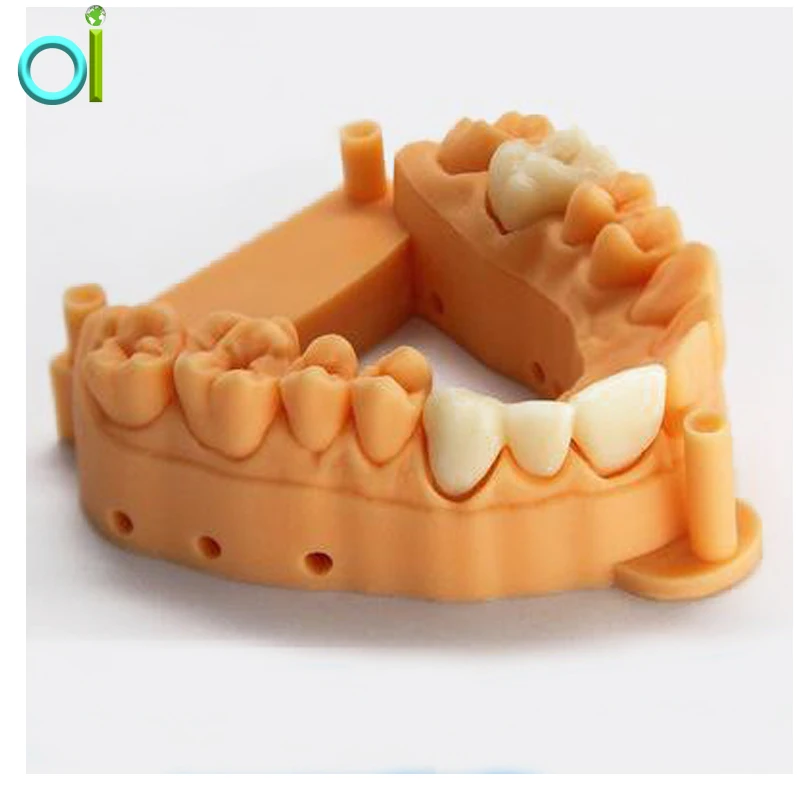
Dental 3D printers enable cost-effective mass production of custom dental products.
Some 3D printers only work with their proprietary materials, which means your options will be limited to what the printer manufacturer offers. Other printers are so-called open systems, which means you can use third party materials.
However, when using third party materials, it is important to ensure that the results are clinically acceptable in terms of quality and accuracy. Moreover, the use of biocompatible materials on unproven 3D printers, which are considered "open" systems, violates application requirements and thus leads to the production of biologically incompatible products. Be careful and be aware of the risks your business is taking by using untested 3D printers and materials.
Surgical templates printed on a Formlabs Form 3B dental 3D printer.
Manufacturers release new materials regularly, so it's very likely that the printer you buy today will be able to create more and more dental products in the near future.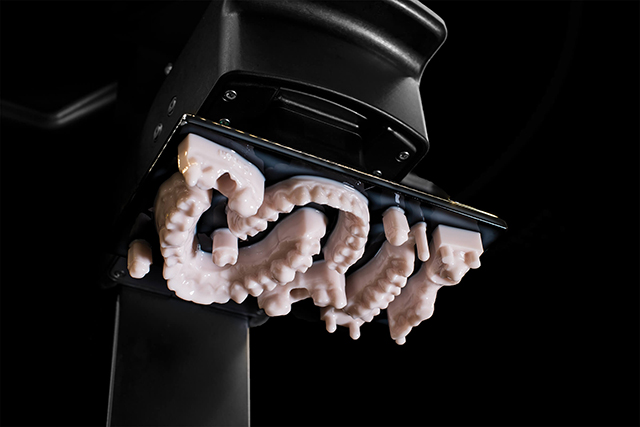
When talking about the speed of 3D printing, it is important to consider not only the printing speed itself, but also the productivity.
The overall print speed of SLA, LFS and DLP 3D printers is about the same. Since the projector exposes each layer in its entirety, the speed of DLP 3D printing is uniform and depends only on the height of the model, while the SLA and LFS 3D printers laser shape every detail. In practice, as a result, SLA and LFS 3D printers become comparable in speed or even faster when printing a single model or smaller models, while DLP 3D printers print several models faster, which almost completely fill the platform space.
However, with DLP printers, there is a trade-off between resolution and working volume. Small DLP 3D printers are capable of printing fast, but you can only place a few models on the platform. Another high volume machine can print more detail, but only at a lower resolution, which means it may not be accurate enough to print restorative models or surgical templates that require higher precision.
The SLA and LFS 3D printers are able to do all of these in one device, giving dentists and labs the freedom to choose between optimal resolution, print speed or performance, as the case may be.
Another important detail, especially for labs, is whether to do all the work on one or more printers. Using multiple presses usually reduces the initial cost compared to larger format devices. By purchasing inexpensive equipment first, labs can test different production methods before eventually scaling up production to meet demand. This makes it possible to pay for production only as the need arises, rather than making large long-term investments in a rapidly developing market.
Print cells also reduce risk through redundancy. If one printer needs maintenance, production can be split between the remaining print cells.
Print Cells allow you to 3D print multiple different models in parallel, spreading production needs and reducing risk through redundancy.
Whereas a few years ago 3D printers were only available to the largest dental laboratories and machining centers, now they are available in many dental offices and laboratories.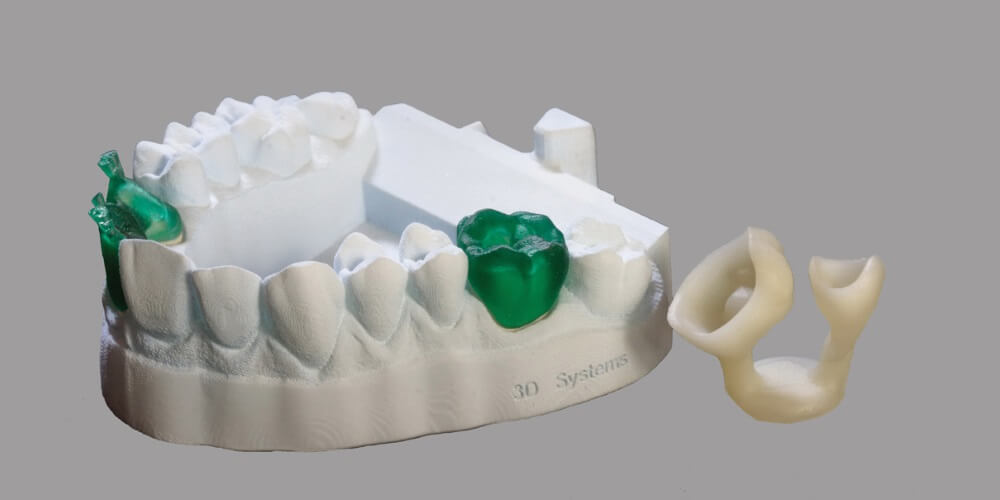
Consider the factors discussed above and the needs of your business: some solutions may work better than others. Be sure to do your research, consider the models you use, and try to avoid overspending.
Explore Formlabs dental offerings, get free guides, step-by-step guides, white papers, webinar training, and learn how to implement 3D printing in your lab or office.
Would you like to see the resulting quality with your own eyes? Choose your material and we'll send you a free sample of the Form 3B 3D printed model for you to evaluate.
Request a Free Sample
Dental 3D Metal Printer for Precise Digital Dentistry
Dental 3D Metal Printer for Precise Digital Dentistry - Eplus3DApplications Dentistry
Dentistry
Dentistry is one of the first medical fields to use additive manufacturing technology. The reason is that dentures, crowns and braces need to be adjusted according to each patient's situation and often need to be manually adjusted after fabrication.